

Home
About Us
Allotments
Garden Equipment
Seed Suppliers
Manure Problems
Children's Pages
GLA Blog
Weather Blog
School Veg Patch
Useful Links
Seed and Plant Propagation
** This website is not a shop and doesn’t sell anything! **
Be aware that any external links may contain cookies and you should refer to the particular website's cookie policy
If you are raising plants from seeds you will need to decide which equipment you will need. Some equipment of offer is very useful and some you could make yourself. This is equipment that we consider to be useful.
We start most of our seeds off in pots, modules or trays as we think it makes better use of the seed as germination seems more successful and so less seed is wasted. This can be an important factor as many packets of hybrid seeds contain very few expensive seeds.
Cost cannot really be the driving force though as the saving on seed is offset by the need to buy compost etc. It is important however, to have as high a percentage successful germination as possible if there is only a sprinkling of seed in a packet.
When sowing into pots or trays rather than into open ground it is easier to control the number of seed sown. Sowing directly into the soil often results in seed germinating in clumps and gaps being left in the row.
Starting off brassica plants in pots also allows them to build up a root system before planting out in ground that may be infected by club root.
Click here to read more
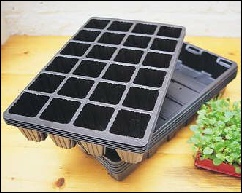
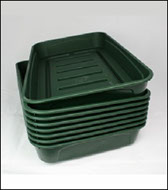
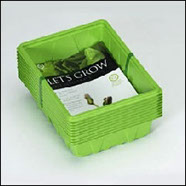
Modules are available is different sizes and fit inside a seed tray. Seeds can be sown individually into each cell or several seeds can be sown and all but the strongest seedling removed and discarded. Alternatively seeds can be germinated in a normal seed tray and then the seedlings can be pricked out into individual cells. The individual cell means that each developing seedling has its own space and roots do not become tangled. The resulting plug plants can then be planted out with minimum root disturbance.
Seed trays are available in full size (as shown in the pictures above) half and quarter sizes. The smaller sizes are useful for germinating seeds that will be later pricked out. Trays are either rigid or thin plastic. The thin plastic ones are cheaper but are easily damaged so although they are initially more expensive the rigid plastic trays will last far longer and be more economical in the long term.
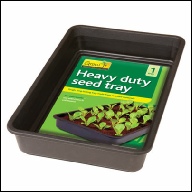

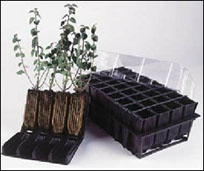
Trays of pots are useful when you want your young seedlings to be planted out at a later stage. The trays make it easy to keep batches of pots together for transporting to an allotment plot or moving them around.
We haven't used them but some like to use 'hinged' root trainers in which to grow sweet peas etc. These offer more depth for rooy growth.
Biodegradable products
With many people trying to cut down on their use of plastic you may wish to opt for biodegradable products It is claimed that these can be planted directly into the ground. They seem work OK if they are kept wet but soon dry out. I have found when I have used them that I need to strip of any remaining ‘pot’ before planting.
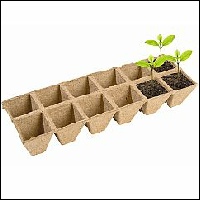

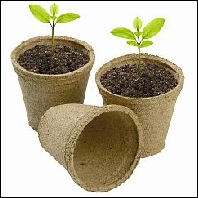
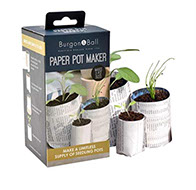
Another option is to buy a kit that allows you to make plant pots from newspaper. We haven't used this type of thing so I can't say how effective this is.
Making an early start
Many gardeners like to get off to an early start when it comes to sowing their seeds. Gardening programmes and magazines often advocate growing seeds on windowsills but we haven’t found this to be at all satisfactory. Seeds will often germinate successfully but then require a good level of light in order for the seedlings to grow strongly and avoid becoming weak and leggy. This is difficult to achieve inside the house unless artificial light is provided. For this reason we bought an Indoor Growing Garden which we have used very successfully. Read more about this here.
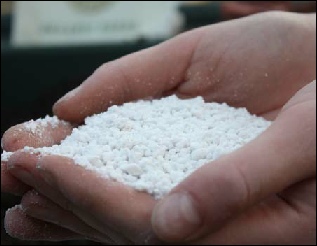
Covering Seeds
Some seeds require light in order to germinate so need to be sown on the surface of the compost. Very tiny seeds also need to be surface sown. In order to cut down on the chance of the seeds being washed about when watering and also to cut down on green algae which will grow on the surface of compost' we use a covering of Perlite or vermiculite. Adding Perlite to compost will also provide a medium with freer drainage. Perlite is a natural product. It is very light and allows light through to seeds and also absorbs moisture.
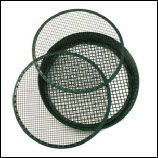
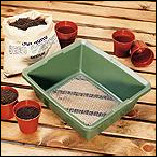
You may also find it useful to invest in a sieve. Some composts are very fibrous or have large pieces of twig incorporated into the mixture which will prevent small seeds form germinating successfully.
Other useful items
You will also need something which will tamp down and level the surface of your compost and a dibber to make holes in which the prick out your seedlings.
You can make your own tamper by cutting a piece of wood to size and you something as simple as an old pencil can be used as a dibber but if you don’t want to use homemade equipment you can find some commercial products.
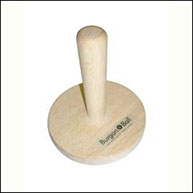

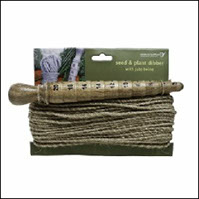
Plant labels
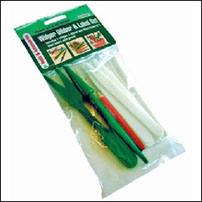 Don’t forget to label seeds and plants - experience has told us that you are unlikely to remember just what you have sown or planted several weeks or months later. You can make your own labels by cutting up plastic containers. There are also various types of labels available in a range of materials but whichever type of label you use make sure that the writing will not wash or wear away. When using plastic or wood make sure that you use a waterproof ink.
Don’t forget to label seeds and plants - experience has told us that you are unlikely to remember just what you have sown or planted several weeks or months later. You can make your own labels by cutting up plastic containers. There are also various types of labels available in a range of materials but whichever type of label you use make sure that the writing will not wash or wear away. When using plastic or wood make sure that you use a waterproof ink.
Photos taken from Amazon.co.uk and Greenfingers
I’ve gathered together some links from companies offering gardening products for sale. I have no connection to the suppliers and therefore cannot be held responsible for any changes in items available or any issues that may arise when making a purchase.
Some companies give me a small commission on sales that are generated from this website which helps me to maintain this and sister websites but this in no way means that I am recommending purchases from a particular company.
Our Plot at Green Lane Allotments Blog | A Gardener's Weather Diary | School Vegetable Patch Website
© Our Plot on Green Lane Allotments - Please email me if you wish to use any of this site's content